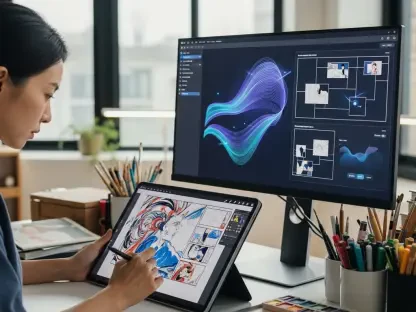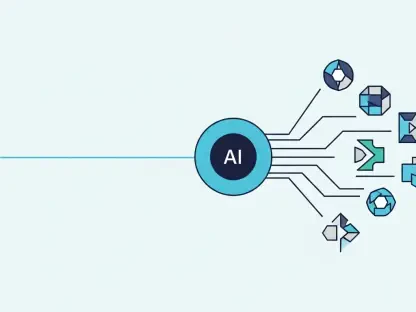In an era where artificial intelligence (AI) is transforming industries at an unprecedented pace, the Australian arts sector stands at a critical juncture with the proposed introduction of a text and data mining (TDM) exception to the Copyright Act 1968, as highlighted in the Productivity Commission’s recent interim report. TDM, a process that enables AI systems to sift through massive datasets—including copyrighted materials like literature, music, and visual art—to train sophisticated models, often without explicit permission from creators, has ignited a heated debate. This legal shift could redefine how art is created, consumed, and valued in Australia. While the potential for innovation and economic growth is undeniable, so too are the risks to artists’ livelihoods and the nation’s cultural heritage. This article explores the multifaceted implications of a TDM exception, delving into the tensions, opportunities, and global contexts that shape this pivotal moment for the creative community.
Balancing Technological Progress and Creative Rights
The heart of the discussion around a TDM exception lies in the delicate balance between fostering technological innovation and safeguarding the rights of Australian artists. The Productivity Commission posits that allowing AI systems to mine copyrighted content without prior consent could accelerate the development of cutting-edge tools, driving economic productivity by removing restrictive barriers to data access. Such a policy might position Australia as a competitive player in the global AI landscape, encouraging local tech industries to flourish. However, this promise of progress comes with significant concerns. Many in the arts community fear that their work could be exploited without fair compensation or acknowledgment, undermining the very foundation of their professional existence. Voices like author Tracey Spicer have sounded the alarm, suggesting that such a policy risks devastating the financial stability of creators already navigating turbulent economic waters.
Adding to the complexity, organizations like the Arts Law Centre of Australia have emphasized the precarious position of artists amidst ongoing challenges such as the cost-of-living crisis. The notion of their intellectual property being used to train AI models without direct benefit to them feels like a profound injustice to many. Beyond mere economics, there’s a palpable anxiety about the erosion of control over one’s creative output. If TDM becomes permissible under a fair dealing exception, it could set a precedent where the value of original work is diminished, as AI-generated content potentially floods the market. The debate isn’t merely about legality but about ethics—how does a society ensure that technological advancements do not come at the expense of those who enrich its cultural fabric? Striking this balance will require nuanced policy-making that considers both the immediate needs of artists and the long-term benefits of innovation.
Cultural Risks in the Age of AI
A deeper layer of concern surrounding a TDM exception focuses on its potential impact on Australia’s cultural identity. Professor Dilan Thampapillai from the University of Wollongong has articulated what he terms a “replacement problem,” where AI-generated content, often derived from datasets skewed toward foreign influences, could overshadow authentic Australian creative works. This raises a significant risk of diluting the diversity and richness that define the nation’s artistic landscape. If AI systems, trained predominantly on non-local content, begin to dominate creative outputs, the unique narratives and perspectives that reflect Australian life might struggle to find their place. The fear is not just of economic displacement but of a cultural shift where local voices are marginalized in favor of homogenized, algorithm-driven content.
This cultural apprehension extends to the broader implications for how art is perceived and valued within society. If TDM allows for the mass production of content that mimics or replaces human creativity, there’s a danger that the intrinsic worth of original Australian art—rooted in personal experience and historical context—could be undermined. Such a scenario might lead to a market where quantity overshadows quality, and the distinctiveness of local storytelling, music, and visual expression is lost to generic, AI-crafted alternatives. Protecting cultural heritage in this context isn’t just about nostalgia; it’s about ensuring that future generations inherit a creative environment that reflects the nation’s unique character. Policymakers must grapple with how to integrate AI without allowing it to erode the very essence of what makes Australian arts exceptional.
Opportunities for Creative Democratization
Despite the concerns, there exists a compelling argument that a TDM exception could democratize creativity in profound ways. Professor Thampapillai suggests that by easing copyright restrictions, such a policy might “liberate creativity,” enabling individuals with innovative ideas to harness AI tools that would otherwise remain inaccessible due to legal constraints. This could lower the barriers to entry for aspiring creators who lack the resources or networks to navigate traditional artistic pathways. Imagine a young artist in a remote area using AI to produce music or visual art, reaching global audiences without the need for expensive training or industry connections. This potential for inclusivity offers a counterpoint to the narrative of loss, suggesting that AI could expand rather than contract the creative sphere.
Moreover, this democratization might foster entirely new forms of artistic expression that blend human ingenuity with machine capabilities. While traditional artists may face adaptation challenges, the emergence of hybrid creative processes could redefine what art means in the digital age. For instance, AI tools might assist in generating initial concepts that artists refine, or they could enable collaborative projects that span disciplines and geographies. The key question is whether this wave of new creators and methods can coexist with established artistic practices without devaluing them. If managed thoughtfully, a TDM exception could nurture a vibrant ecosystem where innovation complements tradition, ensuring that the arts remain a dynamic and evolving field rather than a static relic of the past.
Navigating Global Policies and Local Needs
The international landscape of TDM policies adds another dimension to Australia’s deliberations, revealing both challenges and opportunities. The European Union has embraced TDM exceptions for AI training, the United States operates under the broader fair use doctrine, and the United Kingdom limits TDM to non-commercial research purposes. These varied approaches underscore the absence of a unified global standard, making copyright enforcement in a digital, borderless world particularly complex. For Australia, adopting a TDM exception could mean aligning with progressive tech policies, but it also risks exposing local creators to exploitation if protections lag behind those of other jurisdictions. The disparity in global frameworks highlights the need for a tailored approach that addresses Australia’s specific context.
Professor Thampapillai argues that a well-crafted TDM exception could stimulate the growth of local AI companies, positioning Australia to compete with dominant global tech players. This, in turn, might help mitigate the US-centric bias often embedded in AI outputs by fostering models trained on more diverse, locally relevant data. However, the challenge lies in ensuring that such a policy doesn’t merely benefit large corporations at the expense of individual artists. Australia must navigate this global-local tension by learning from international precedents while prioritizing the protection of its creative sector. A misstep could see the nation trailing in the AI race or, worse, sacrificing its cultural distinctiveness for short-term technological gains. The path forward demands a strategy that harmonizes global competitiveness with local interests.
Crafting a Path Forward for Arts and Innovation
Ultimately, the discourse around a TDM exception isn’t about choosing between rejection or full acceptance but about finding a middle ground that serves both innovation and the arts. The Productivity Commission has stressed that any exception would not be an unchecked license, proposing safeguards like clear legislative criteria to ensure fair use and protect copyright holders’ interests. This cautious stance reflects an understanding that while AI is inevitable, its integration into the creative industries must be managed with precision. Historical parallels, as noted by Thampapillai, remind us that copyright law has often adapted to technological shifts—think of the advent of photocopiers or digital music platforms—initially causing disruption but eventually leading to new norms and opportunities.
Reflecting on these past adaptations, it becomes evident that the challenge lies in anticipating and mitigating the negative impacts on artists while embracing the potential for growth. A balanced policy might involve mechanisms for compensation or opt-out options for creators wary of having their work mined by AI systems. Additionally, fostering dialogue between tech developers, legal experts, and the arts community could help shape regulations that are both forward-thinking and protective. The goal should be to create a framework where AI enhances rather than replaces human creativity, ensuring that Australian arts continue to thrive amidst technological change. This careful navigation, grounded in lessons from history, offers a blueprint for a future where innovation and cultural heritage coexist.









